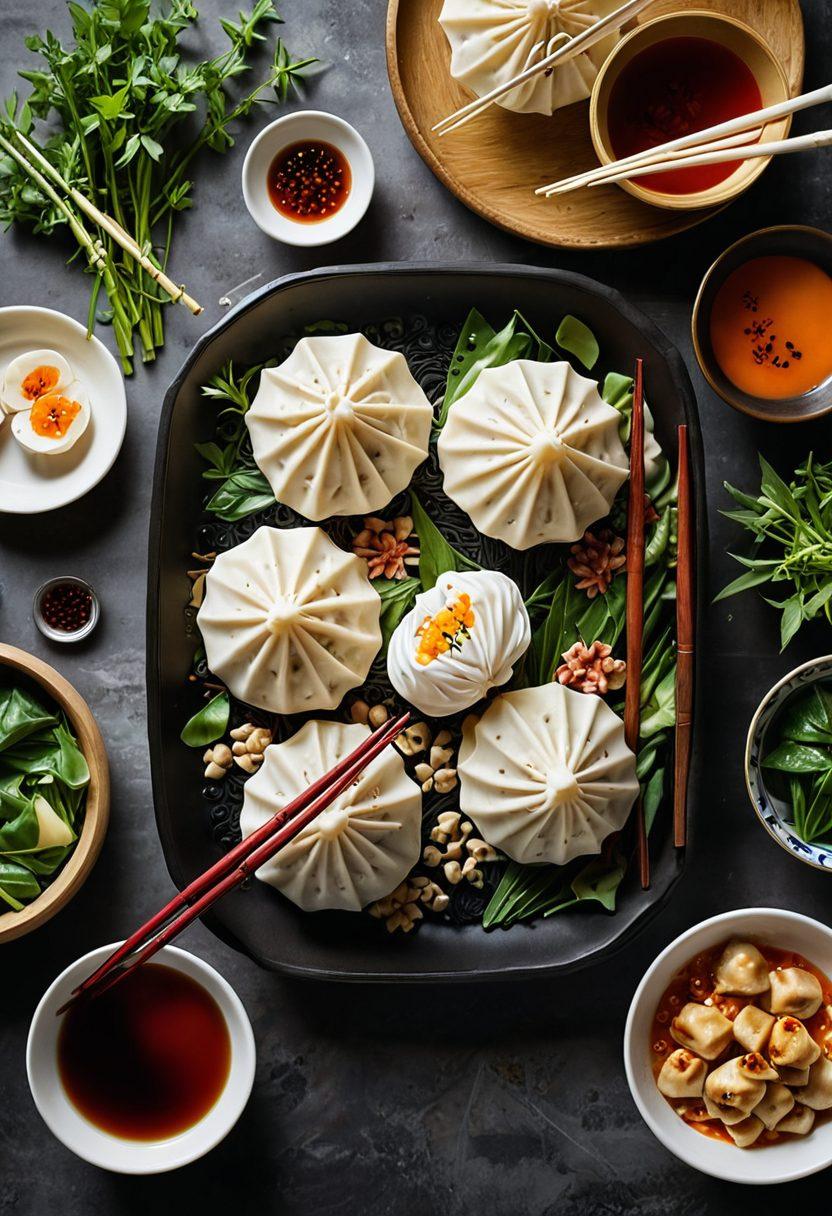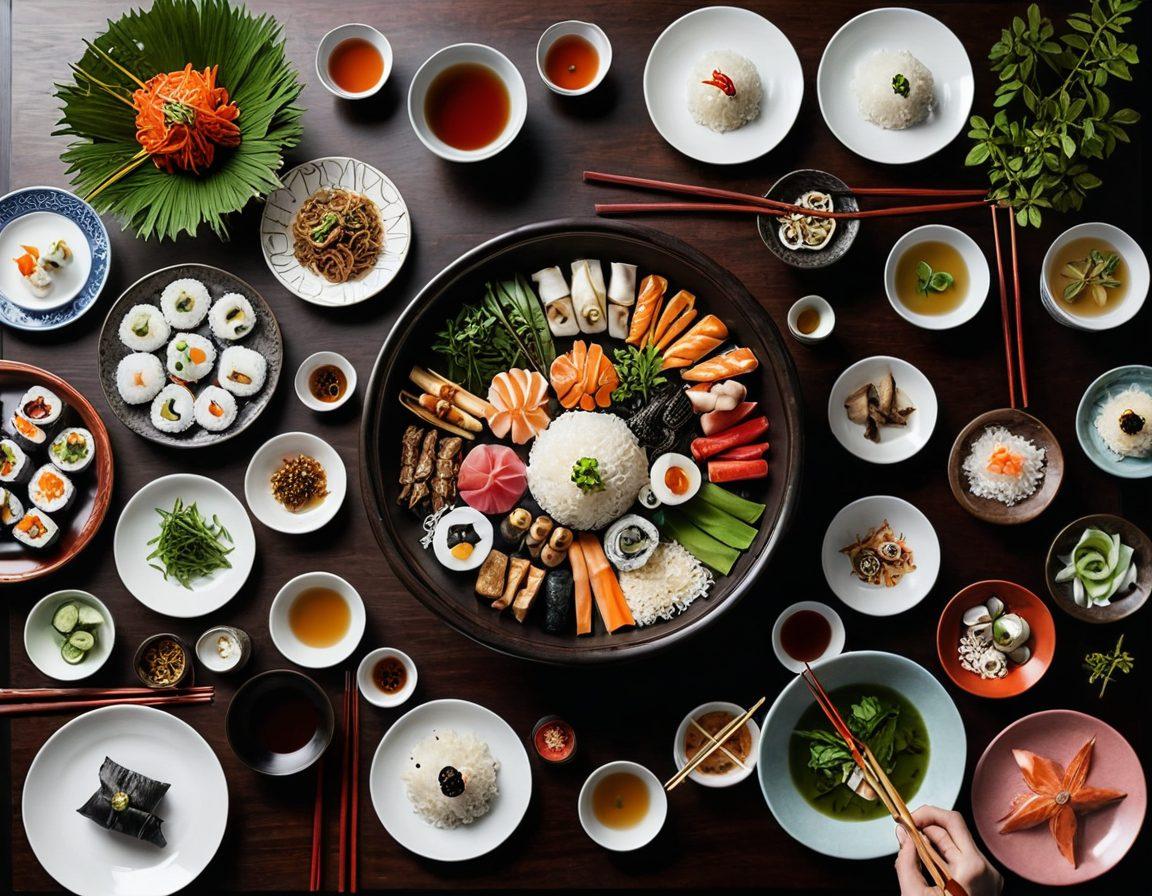Savoring Joy: The Delightful World of Chopsticks in Asian Dining
Imagine a table set with vibrant colors, enticing aromas wafting through the air, and laughter ringing as friends and family gather around for a delightful meal. This is the essence of joyful dining, especially when chopsticks come into play. These simple yet elegant eating utensils have a rich history and are vital tools in Asian dining culture. Throughout this culinary journey, we will explore how using chopsticks transforms meal enjoyment from a mundane act into a cheerful celebration of food culture, storytelling, and vibrant gastronomy.
Chopsticks, often seen as a pair of slender sticks, might seem rather ordinary, but they come laden with cultural heritage. In fact, their origins date back over 5,000 years, evolving from cooking tools to essential dining utensils. In many Asian cuisines, they embody not just functionality but also artistry. Think about it: have you ever felt a surge of satisfaction when expertly lifting sushi or twirling noodles around your chopsticks? This is not just about eating; it’s about engaging with our food and savoring the moment. After all, who wouldn’t feel delighted when effortlessly digging into a bowl of steaming ramen?
One of the most beautiful aspects of using chopsticks is the connection they create between the diner and their dish. The tactile experience of picking up food encourages mindfulness in every delightful bite. Have you ever noticed how the clinking of chopsticks against bowls adds a cheerful symphony to your dining experience? Each meal becomes a canvas on which culinary stories are painted, deepening our appreciation for the cultural significance behind these utensils. It’s no longer simply about filling our bellies; it’s about cultivating a satisfaction that envelops us with joy!
Not only do chopsticks foster a unique way to enjoy your meal, but they also serve as a reminder to celebrate our diverse food experiences. Traditional Asian dining often involves shared dishes, which encourages conversation and connection among diners—it's a beautiful way to bring people together. With chopsticks in hand, the act of sharing becomes an extension of love and respect for one another, echoing the mantra that meals enjoyed together yield the greatest joy. What is your favorite dish to share with loved ones?
As you embark on this culinary journey with chopsticks, remember that joyful dining is all about breaking free from conventions. Whether you're a seasoned expert or just starting, practice makes perfect. Dive into the world of Asian dining and fully embrace the experience. The next time you sit down at a table, consider how these seemingly simple tools can elevate your meal enjoyment to new heights. Let's raise our chopsticks and celebrate the art of joyful dining, savoring every delicious moment!
Chopsticks: The Cheerful Utensils Transforming Asian Cuisine Experiences
When we think of joyous experiences in dining, what often comes to mind are not just the delectable dishes we consume but the utensils we use to enjoy them. Enter chopsticks – the cheerful utensils that have not only transformed Asian dining but have become a fascinating part of food culture around the globe. Unlike traditional forks and knives, these clever eating utensils bring a unique flair to the table, allowing us to engage with our meals in a way that is both playful and respectful of the culinary heritage they represent. How can something as simple as two sticks create such an air of delight?
Using chopsticks might seem daunting at first, but with a little practice, they can quickly become a natural way to savor food. Picture yourself skillfully lifting a mouthful of noodles, the delicate strands gracefully spiraling around the chopsticks as they dance towards your mouth. There's something undeniably cheerful about this act, which subtly connects us to centuries of gastronomical tradition. With every bite, we find ourselves more content, enjoying not just the flavors of Asian cuisine but also the engaging experience that chopping brings. Have you ever asked yourself how many flavors can be unlocked through mastering the art of these, often overlooked, utensils?
Every meal enjoyed with chopsticks adds a layer of satisfaction, enhancing the beauty of sharing food with others. It becomes a cultural celebration as we gather around a table, passing dishes, scooping rice, and grasping pieces of sushi, all using chopsticks. The act of eating becomes an experience of togetherness—stories shared, laughter exchanged, and friendships fortified. Isn’t it amazing how such simple cuisine tools can create camaraderie and spark joy? What stories will you uncover the next time you gather your friends around a table with chopsticks?
Chopsticks also serve as a bridge between tradition and modernity. With the rise of Asian cuisine in global culinary scenes, many are embracing these cheerful utensils as a way to connect with diverse cultures. Restaurants worldwide are incorporating learning experiences around chopstick usage—from workshops to dining challenges—fostering a deeper appreciation for food enjoyment. This encourages diners to savor each moment spent with their meal, reminding us that culinary adventures are not just about the food, but also about the joy found in how we consume it. How can we, as food lovers, embrace this cultural richness in our own homes?
In the end, the joyful and satisfying experience of eating with chopsticks transcends beyond mere meal enjoyment. It teaches us the importance of mindfulness in dining. Next time you sit down to enjoy a dish, consider picking up chopsticks and allowing yourself to be fully engaged with your food. Every meal becomes an opportunity to honor cultural heritage, explore gastronomy, and connect with those around you. So, why not take that leap of faith and let these cheerful utensils transform your dining experience? Let every bite you take resonate with joy!
Savoring Culture: How Chopsticks Elevate Meal Enjoyment in Asian Dining
When we think about the joy of dining, our minds often drift to the delightful experiences shared over a table filled with mouthwatering dishes. But what elevates this experience, making it not just a meal but a moment to savor? Enter chopsticks: the quintessential eating utensils that have been an integral part of Asian dining culture for centuries. These humble yet elegant culinary tools do more than just help us pick up food; they carry with them a rich cultural heritage that transforms each meal into an artful experience. As we delve into the enchanting world of chopsticks, we discover how they contribute to a cheerful atmosphere, transforming our dining rituals into joyful celebrations of food, family, and heritage.
Picture this: you’re sitting in a bustling Asian restaurant, surrounded by the vibrant colors and aromas emanating from beautifully prepared dishes. As you grasp your chopsticks, there’s an instant sense of anticipation. Each piece of food you lift, whether it’s fluffy sushi or savory dumplings, becomes an adventure worth savoring. The experience of using chopsticks enhances our meal enjoyment, urging us not just to eat, but to engage with our food. Have you ever pondered how the simple act of using chopsticks can amplify your joy while dining?
Chopsticks are more than mere utensils; they are indeed symbols of Asian gastronomy. They compel us to be more deliberate and precise in our eating habits, encouraging a slow-paced, mindful approach to dining. As we navigate our plate, picking up small morsels, we find ourselves satisfied not just by the flavors, but by the entire experience. This act of savoring, of holding food between two slender sticks, invokes both focus and appreciation. "The chopstick is a piece of art in its own right; it transforms the mundane act of eating into a performance," shares a renowned chef whose tableware enhances the essence of his cuisine. Isn’t it delightful how something so simple can make us feel so connected to our food?
Moreover, chopsticks bear witness to the fascinating tapestry of food culture that spans continents and centuries. Every region’s chopstick style reflects its unique culinary traditions and social customs. From the lacquered wooden sticks of Japan to the ornate silver ones favored in Chinese banquets, each pair is an extension of its respective cultural heritage. Through the use of these tools, we don’t just enjoy a meal; we become part of a larger story. One bite, one clink of chopsticks against a bowl, and we’re involved in an age-old dialogue about food and connection. Keeping this in mind, how can we replicate such rich experiences in our own homes?
At gatherings, let’s make chopsticks a focal point of enjoyment, infusing our tables with a touch of Asian dining flair. Picture inviting friends over for a culinary adventure where each dish requires the use of chopsticks. Not only will it add an element of fun, but it will also encourage everyone to engage more intimately with the meal and each other. To amplify the atmosphere, try placing a small card on each plate that explains the significance of chopsticks in Asian culture. This act will not only keep your guests entertained, but it will also foster a deeper appreciation for the joyful art of eating with chopsticks, allowing everyone to leave feeling satisfied and delighted. So, next time you gather around the table, share the joy and cultural richness that these simple utensils can bring to your dining experience.


